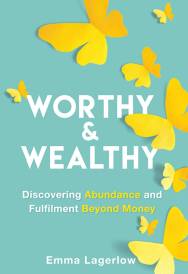How to Move More and Reach Your Physical Activity Goals

Dr Helen Brown Tip and Encouragement
When it comes to physical activity, we're often told we need to move more. But what does this actually mean? How much exercise or physical activity should women aim to be doing?
The Australian Government has its recommendations, but what does this look like in the real world? We asked three women about their physical activity habits, to see if their weekly quotas reached the recommended amounts.
We also called in the help of Jean Hailes Head of Translation, Education and Communication, and President of the Australasian Society of Behavioural Health and Medicine, Dr Helen Brown, to give some tips, encouragement and advice to help them along their way.
A few things to know before we get started
The recommendations for adults (aged 18-64 years) per week are:
150-300 minutes of moderate intensity physical activity, or
75-150 minutes of vigorous intensity physical activity, or
an equivalent combination of both.
Remember: moderate intensity activities require some effort (puffing a little, but able to carry out a conversation), whereas vigorous intensity activities require us to breathe much harder (make us puff and pant).
These recommendations also include the total time you spend doing -incidental physical activity' – that is, the tasks in your daily life that include being active; for example, walking to the bus stop, doing the shopping, or taking the stairs instead of the lift.
Incidental physical activity often occurs in bite-sized chunks and can be an easier way to build up to the recommended levels required for good health.
Nina, age 42
First-up is Nina. Nina is a mother of two girls, aged two and four. Nina works two days a week and often feels too stressed and busy to be active. 'I always feel better after I do some exercise," she says, 'but with the kids and work, it's always a juggle or a struggle, and some weeks are crazier than others."
Nina lives within biking distance to work and sometimes cycles to and from work. On her non-working days, Nina estimates she does 20 minutes of (moderate intensity) incidental physical activity a day – mostly made up of cleaning the house, carrying the shopping, pushing the pram and generally running after her two little ones.
 Here's an average week for Nina:
Here's an average week for Nina:
Firstly, well done on doing some physical activity! It can be hard to find the time to do more in your jam-packed days, so instead, I would suggest you try to include more incidental physical activity and weave it into the tasks you're already doing.
For example, you could walk with your girls to kinder, or when dropping them at a nearby friend's house. Or, when you're with your youngest, you could walk and push the pram, and try building up to a slow jog – this would be a good way to increase your vigorous intensity minutes and you'll get more bang for your buck.
Keep up the cycling to work and, if you can, try to increase this to twice a week.
All the smaller bits and pieces add up too; for example, walking around a shopping centre can be counted towards your daily physical activity.
Bronwyn, age 24
Next up is Bronwyn. Bronwyn works full-time, often over-time. During the week, she feels she doesn't have a lot of time for exercise. 'On workdays I'm too stressed," she says. 'I try to pack in my exercise on the weekend, but sometimes all I want to do is hang out with my friends or sleep."
Bronwyn uses her car a lot and her incidental activity is about 5-10 minutes a day, mainly consisting of walking around the office, to get a coffee and while doing her weekly shop.
 Here is Bronwyn's physical activity on a plate:
Here is Bronwyn's physical activity on a plate:
What Dr Brown says:
Being busy and stressed is a really common barrier to people being physically active. But it's important to know that being active has physical benefits as well as mental benefits and can help to manage worry and anxiety.
I would suggest including a 20-minute brisk walk outside as part of your workday at lunchtime. This would add 100 minutes to your weekly quota, and you'll feel better both mentally and physically.
Try blocking out the time in your work calendar and make it a -non-negotiable' part of your workday. Keep a pair of sneakers at work and some leggings and socks in your desk drawer to make it easier. You could also consider talking with your manager about the possibility of getting a few stand-up desks at work or doing a weekly walking meeting.
All that said, walking is not enough for bone health, so I would recommend trying to include other impact activities on the weekend – boxing class is great, or see what other classes your local gym offers. Maybe even see if you can find a friend or gym buddy and go together – that way you can motivate each other and it makes it more fun.
Aggie, age 63
Lastly, is Aggie. Aggie is fit and flexible for her age. She lives alone, works three days a week and has a busy social life. Aggie has 'never liked exercise and didn't grow up playing sport", but is active most days of the week, doing both physical activity for fun or socially, as well as part of her weekly chores.
 Here is Aggie's week of activity:
Here is Aggie's week of activity:
What Dr Brown says:
This is a great example of how you don't necessarily need to be -sporty' or -do exercise' to meet the requirements. Well done, Aggie!
Gardening is a great way to keep active, as it's excellent for flexibility and muscle strength. Plus, doing it with friends makes it more fun! The nature walks are another great way to be social and active at the same time. My recommendation for Aggie would be to try and include some uphill routes, as this would benefit her bone health.
A final word from Dr Brown for all women:
A good phrase to remember is: -Doing some is better than none.' Start small and build up to the recommended levels. You don't need to start off running a marathon; even a gentle walk is a win. Work some exercise into your day – whatever that looks like. And remember to include muscle strengthening activity, such as lifting, carrying or skipping, at least two days a week.
Read more about physical activity and exercise on the Jean Hailes website.
Published with the permission of Jean Hailes for Women's Health
jeanhailes.org.au
1800 JEAN HAILES (532 642)
MORE



